CONTENTS
TOPOGRAPHY
HISTORY
THE NAME OF THE VILLAGE
POPULATION
A FEW BIOGRAPHICAL NOTES
SCHOOLS
CHURCHES
ASSOCIATIONS
ADMINISTRATION
THE PLAIN
PROFESSIONS
SOCIAL LIFE
WATER SUPPLY AND SPRINGS
COUNTRYSIDE AND TOPONYMS
MAHALLAS AND SOKAKS [Turkish= Neigbourhoods and streets]
THE BEAUTY OF BUDJAH WOMEN
FIGURES OF BUDJAH
NOTABLE VISITORS OF BUDJAH
THE PERIOD OF THE 1st WORLD WAR
IMPRESSIONS OF ATHENIAN REPORTERS DURING THE GREEK OCCUPATION
THE DESTRUCTION
THE NEW BUDJAHS (GREECE)
SUPPLEMENTS AND CORRECTIONS
TABLE OF PICTURES
INDEX OF MAIN NAMES
11
15
18
20
38
53
58
83
83
84
89
96
101
104
112
114
116
118
121
136
141
150
155
157
THEMISTOKLIS ATHANASIADIS
NIKOLAOS AND ASIMINA MINADAKIS
ATHANASIOS N. KAMPOUROPOULOS
VILLA SPARTALIS
BARKER RESIDENCE
FOKION VOUTSINAS
ANTONIOS AREALIS
CHORAFAS RESIDENCE
IOANNIS EMM. ATHINOGENIS
ANTONIOS I. ATHINOGENIS
STASOS GEORGALOS
GEORGIOS AND ANNA HORS
DIMITRIOS G. HORS
THE NUNS’ SCHOOL
AGIOS GIANNIS (ST. JOHN) OF UPPER MAHALLA
AFTER THE DESTRUCTION, UNTIL 1961, HERE ONCE STOOD THE UPPER AGIOS GIANNIS
THERE, WHERE ONCE STOOD THE CHURCH OF LOWER (MAHALLA) AGIOS GIANNIS
THE EVANGELISTRIA (ANNUNCIATION) CHURCH
THE SOUTH ENTRANCE OF EVANGELISTRIA AFTER 1922
THE FACADE OF THE LATIN CHURCH
THE INTERIOR OF THE LATIN CHURCH
THE TOWER OF CHATZANTONIS
THE AQUEDUCT OF KAN GÖL [Turkish= Blood lake]
THE KOZAGAKI [Turkish= Kozağaç, neigbourhood of Buca]
THE THREE WELLS [Turkish= Üçkuyular, neigbourhood of Buca]
THE NINE FOUNTAINS
THE TSAMIA
THE FARDI SOKAĞI
THE BEER HOUSE
PANAGIOTIS XEROS
THE CHURCHES’ SEALS
THE FUNERAL OF THE FOUR INNOCENT VICTIMS
FROM THE CELEBRATIONS OF NEW BUDJAH (GREECE)
33
34
35
37
37
39
40
41
42
44
46
48
50
57
58
60
71
72
73
76
77
85
102
107
111
111
113
113
115
124
129
133
153
(Abstract from pages 80-83 about the Anglican church and cemetery)
The Protestant church of All Saints was founded in 1835 with the cooperation of English and American clergymen, first as a chapel, inside a house. However, in 1866 the church that still survives was built, opposite the Blackler’s garden (today a property of George Falbo) and inaugurated by the Bishop of Gibraltar1.
Around the church is the cemetery “a truly stone chronicle of the English colony of Smyrna” according to Hatzi-Kosti2, from almost the middle of 19th century, until the first half of the 20th. In that cemetery existed around 236 family graves, among which the Barker, the De Jong, the Goût, of whom one named Ralph had a Greek wife Calliopi (1842-1879) member of the Maltass family, the archeologist and professor of the Evangeliki Scholl Georges Weber, the Cadoux, the Fonton, the Belhomme, the Werry and other renowned families of the community.
The Turks after 1922, in order to honour Weber’s phillo-turkism and his work on ancient Ephesus, brought a small column from Ephesus3 and placed it on top of his grave, engraving on its podium a relevant German inscription, stating that the Directorate of Izmir Museum offered this column in memory of the enthusiast researcher and friend of Turkey.
Today (1962) the English community of Budjah, that once flourished there and beautified the village does not exist. No Englishman lives there anymore. The great Rees mansion by the train station was sold in 1956. In the cemetery, no-one has been buried since 1928, and since 1935 remains shut because according to the Law, all cemeteries, of Turks and of other denominations, must be situated outside the city.
In the Anglican cemetery, there is a grave, in the middle of the right section, with the only Greek inscription. It belongs to Maria, wife of N.K. Papadaki, daughter of John Vickers. She died on November 1st 1871 at the age of 36, apparently keeping the Protestant faith as her religion. The touching inscription on her grave, dedicated by her husband, is as follows:
Caring little for the earthly
lusting for Heavens
sent young towards God
missing from my embrace
my all dearest Maria
where now sweet wife
where shall recreation find
my grieving heart?
In the same cemetery lie two more graves, on which the name GELASTOS can be read. The first carries the name “SPIRO GELASTO, native of Smyrna” who died on August 12th 1856, at the age of 56. The second belongs to his wife Louisa, of the William Barker family and carries the following inscription:
LOUISA GHELASTO
Last survivor of the 20 children
of William Barker of Blackwell
in Derbyshire and relict of
the late Spiro Gelasto of
Smyrna, born Leghorn 4th December 1791
died Boudjah 24th July 18694
1- S. W. H. Bird “And unto Smyrna - The story of a Church in Asia Minor”, London 1956.
2- ‘Smyrnaika Analekta’ p.100. Also see Livio Amedeo Missir “A Link with the past - Documentary serial of Budjah church cemetery”, in the English magazine “The Candlesticks” vol. II, No 17. The Candlesticks is a weekly, pocket-format, 12-page magazine, instrument of the Anglican parish of Smyrna, published since 1950, printed in London and distributed free of charge to the members of the parish there. “Candlesticks” are the seven candlesticks, i.e. the Churches of Apocalypse.
3- G. Weber, of Alsatian origin, published in 1891 the first archaeological guide of Ephesus.
4- These two inscriptions were copied and sent to me courtesy of a Greek-learning inhabitant of Boudjah, an excellent sir and friend, mister Livio A. Missir [books] , to whom I owe much for the present essay.
Note: Translation kindly provided by Athens based Smyrna/Izmir enthusiast, Achilleas Chatziconstantinou. He has a keen interest in the city’s past and plans to aid this study with further translations and detailed analysis of the Ernest Bon map of the Punta area of Smyrna, dated 1913, and his work will be featured in the maps section of this web site. In advance of further translation of the Kararas book Mr Chatziconstantinou has added the following notes on pertinent sections.
The beer house was opposite the cinema “Aktis” and was the property of Panayiotis Gritziotis, accessed by turning right from the boulevard Spartali that passed in front of the Station. Another restaurant was the “Pagoda” (Pagoda-shaped) in front of the Forbes villa.
The Kan göl was 1½ hours to the east of Budjah. There was no lake there but its rich spring used to form a swamp. That spring was in a cave and a Greek engineer Vasiliadis built an aqueduct, pretty much like the Romans did, on which Lord Byron inscribed his name (he did it everywhere!) and brought the water to Budjah. At the other end was a water reservoir called “little Kan göl”.
The Hotel Manoli or “lokanta” was the only (and quite expensive) hotel-restaurant, belonging to Dimitrios Defteraios, close to the Catholic Church.
The Chatzantonis tower was actually two conical towers, one on top of the other. It was on the plain, close to the nunnery [now Çakabey school], on the road of Evangelistria.
The famous visitors to the village were:
1. Swedish traveller Frederic Hasselquist (1749)
2. Lord Byron (5/3/1810). Stayed 36 days in the John Gout house where he was inspired the write the ‘Child Harold Pilgrimage. That house was replaced by a new one in 1894, when its owner was Mr Bliss. That second house changed hands many times and was torn down in 1955 along with the cypresses of its famous alley, named “Byron’s walk”.
3. English traveller William Turner (1816) stayed at Gout’s.
4. King Otto of Greece (6/1833)
5. The traveller Francis Hervé (1837)
6. Sultan Abdul Aziz (4/1863) stayed at the Baltazzi House.
7. Ex-queen Eugenia of France (summer 1907) stayed a few hours at the Barff mansion.
 |
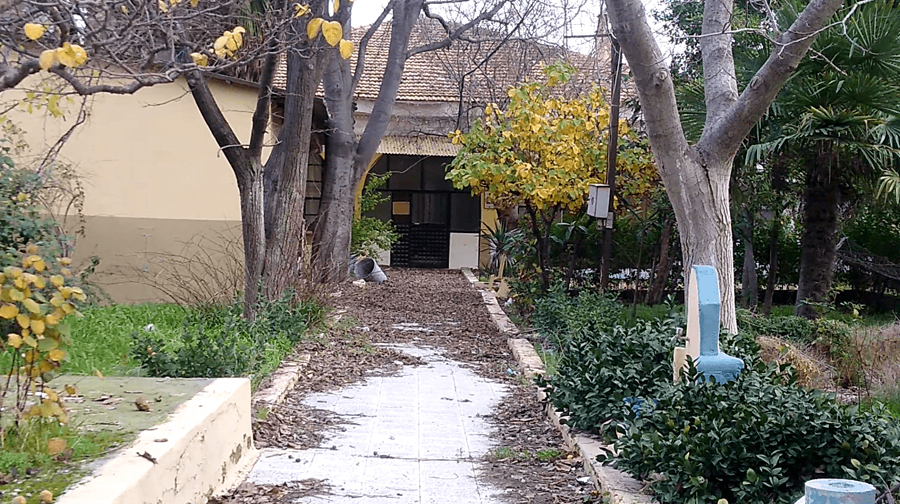 |
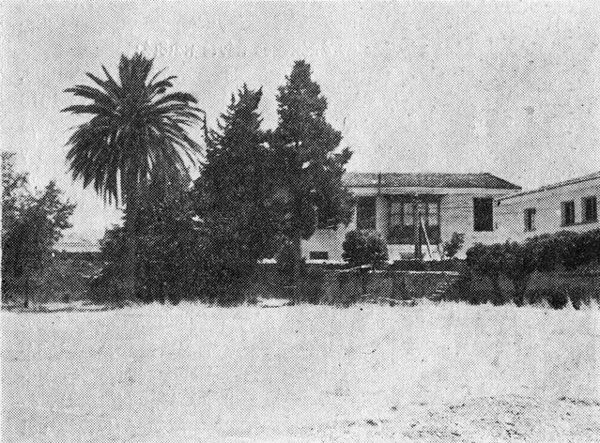 |
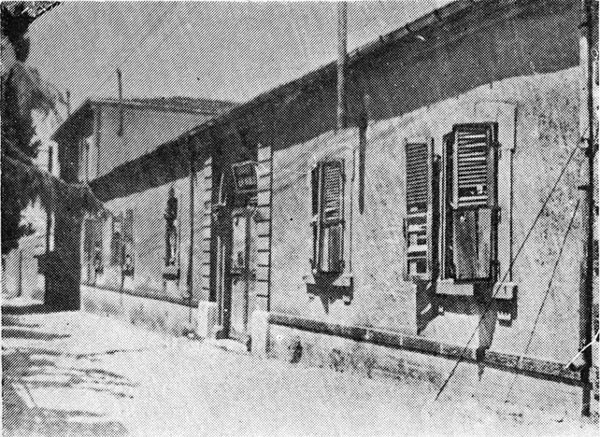 |
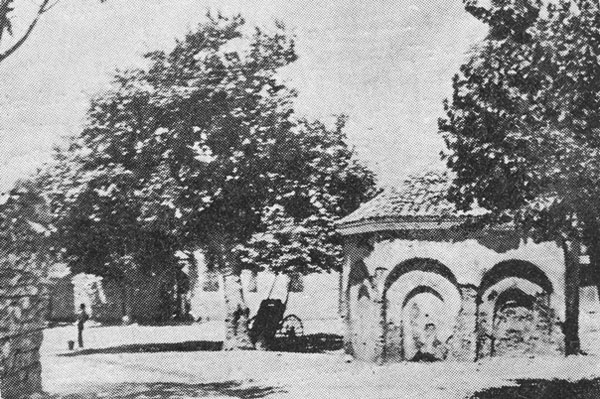 |
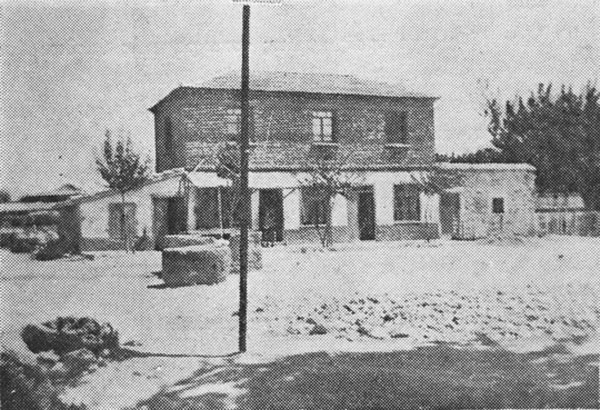 |
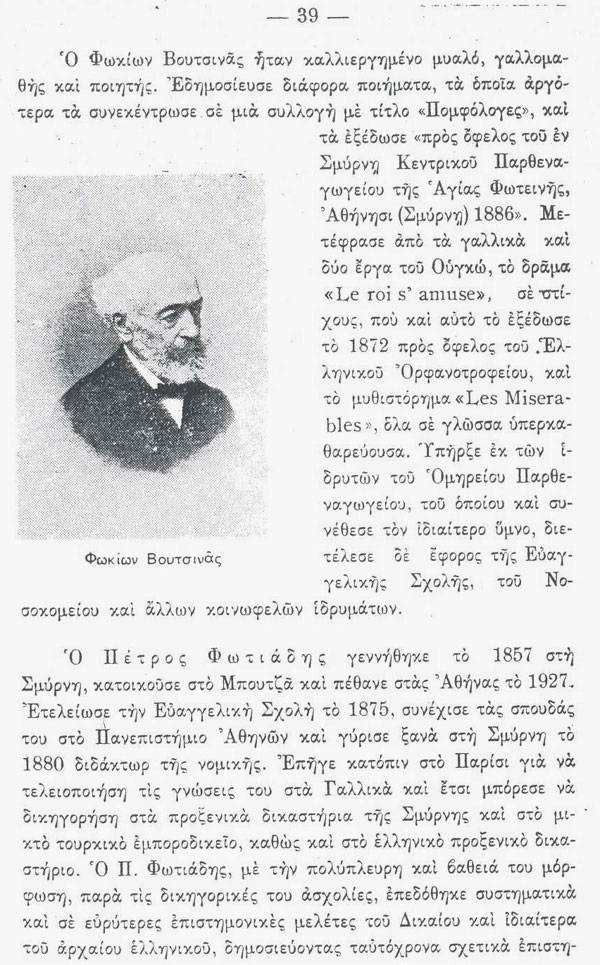 |
He was also an “Eforos” (a kind of administrator) of the Evangeliki School, the hospital and other institutions of bien-faisance.
Translation courtesy of Alex Baltazzi.